Despite the warm Indian summer, it is now autumn both meteorologically and astronomically. Rain is falling (to be expected), hopefully leaves will soon turn orange and mushrooms will pop up everywhere. When morning dew makes the grass and plants glisten, many people start spotting mushrooms. Colorful mushrooms, rarely edible and often treacherously dangerous. In the game Mycelia, players try to be the first to bring the dewdrops from their fields to the temple with the help of many magical forest creatures, including a lot of walking fungi and mushrooms. Will you know how to dispel the dew before morning?
Background
Mycelia, also known as mycelium, is not only the title of this game, but also of another game released this year. This review is about Daniel Greiner’s colorful deckbuilder published by Ravensburger and not J.J. Neville’s somewhat more complex game with the botanical drawings.
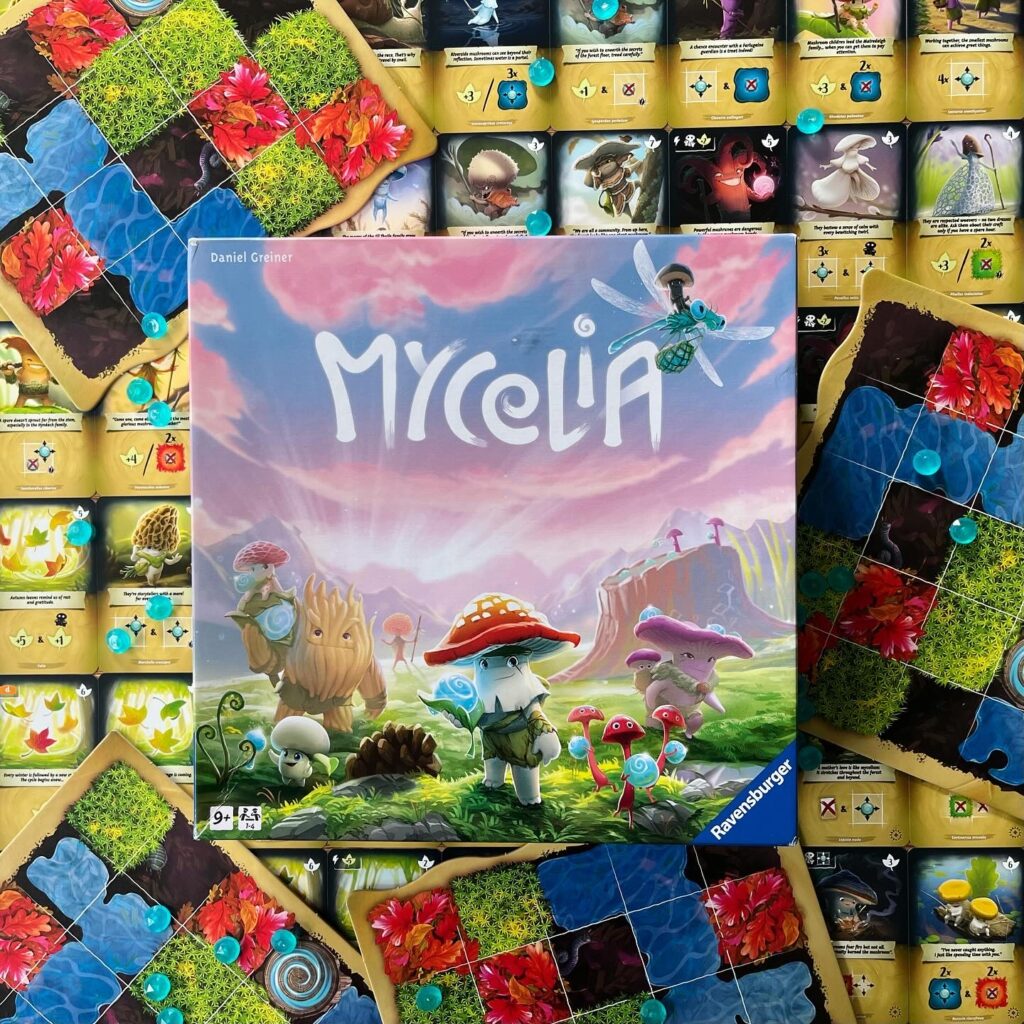
Mycelium is the network of threads of a fungus. Think of a kind of colony of the fungus. Multiple paths, roads, branching and you name it in the soil or even in other organism. A moldy world of its own. Such fungal lures can give rise to veritable fruiting bodies and these are the mushrooms and fungi we know and love.
The game Mycelia, however, revolves around magical creatures that also form an ecosystem of their own. These creatures carry duaw drops to the temples on their fields, trying to be the first to finish their field. For this, however, they must hire enough heroes.
Setup & gameplay
If you are familiar with the game mechanism deckbuilding, then you will learn the game Mycelia in no time. Indeed, the game largely revolves around this principle. Players collect cards and use them to form their own personal draw pile, with which they will perform actions during their turn to, among other things, move and remove dewdrops.
At the beginning of the game, players set up the temple and place the die on it. In the center of the table, the draw pile is placed with 5 cards that make up the general market. Within easy reach of all players are placed the leaves (currency) and any additional tiles if players are playing the advanced version of Mycelia. Each player receives 6 starting cards, a field (player board), 20 dewdrops to place on the board and a two action tile. The player who likes mushrooms the most gets to start.
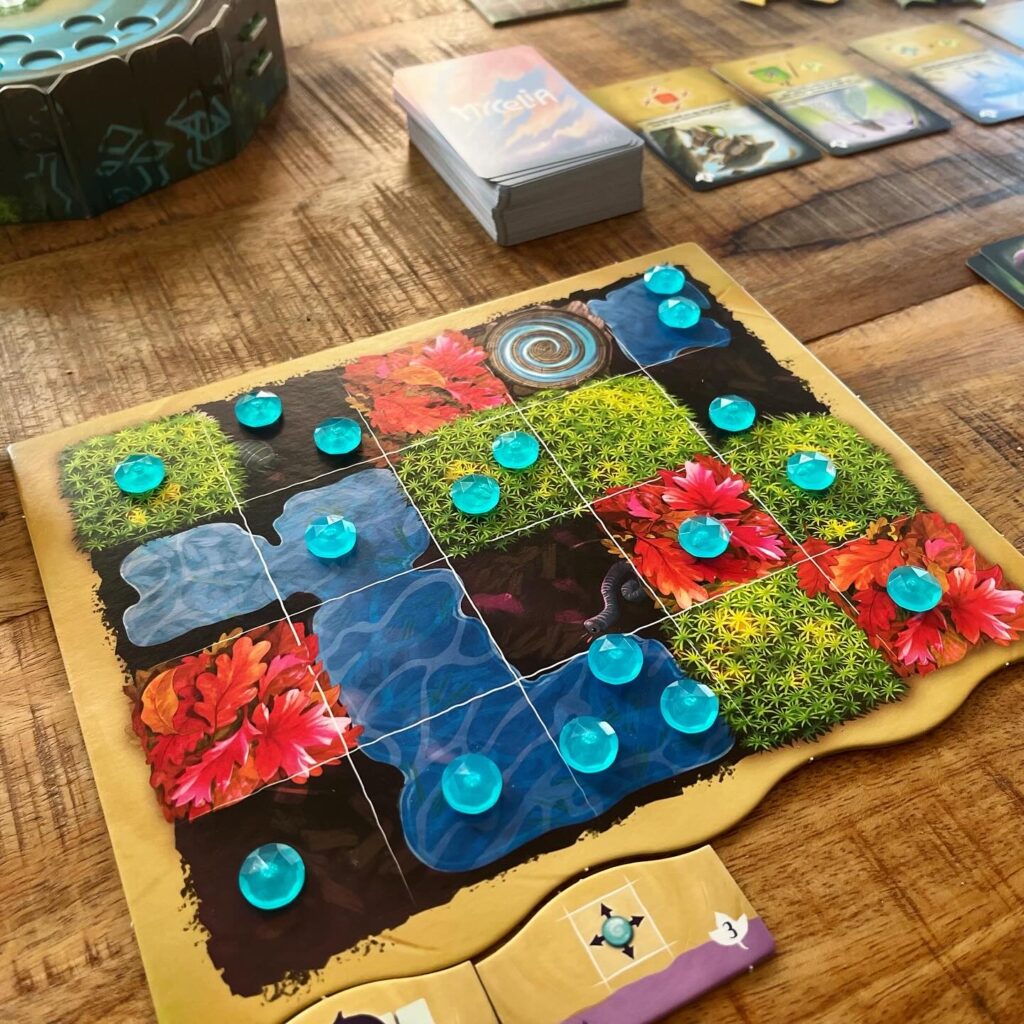
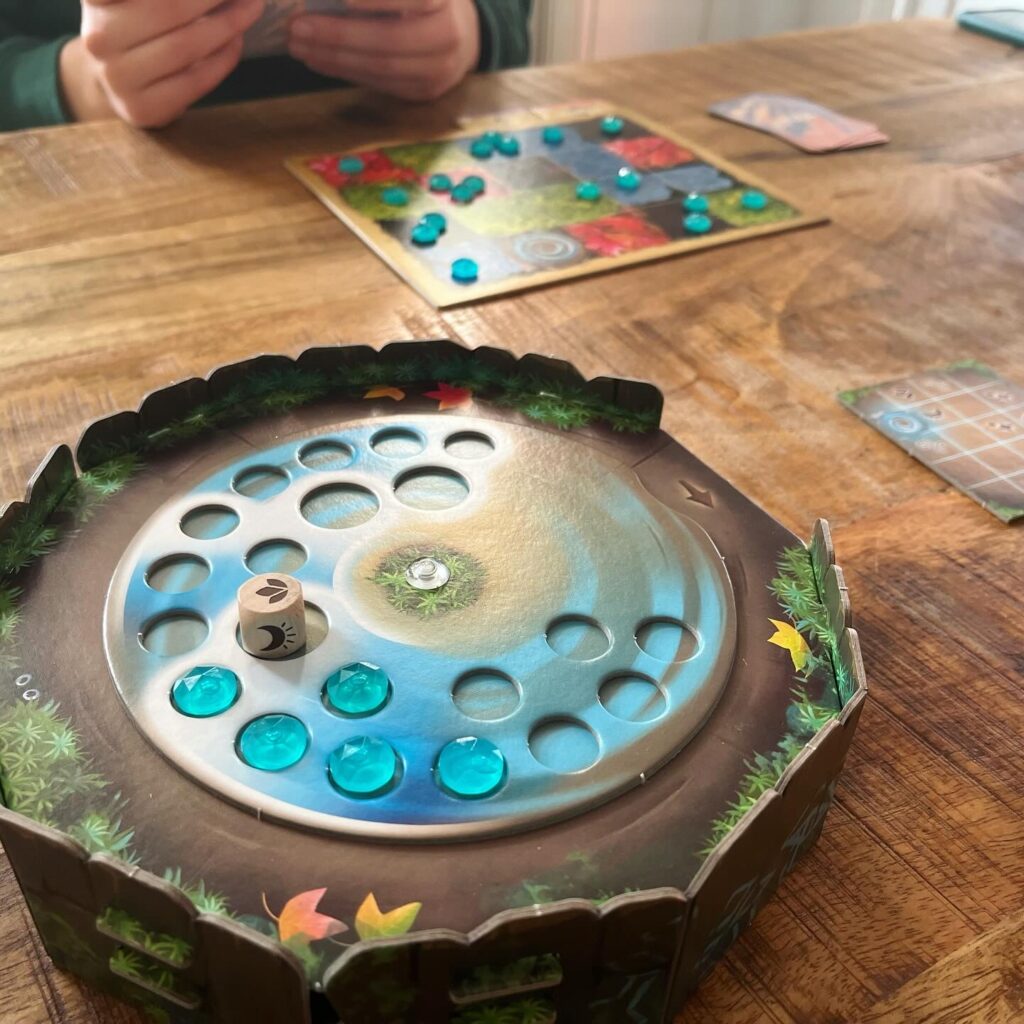
Players always have three cards in hand. Each turn they play their action cards in an order of their choice and apply the corresponding effects. Often players receive leaves or may move or remove dewdrops. Often there are specific conditions for removing dewdrops. Perhaps they must be on a specific space or near a specific number of other dewdrops.
Players can also buy cards from the central market during their turn by spending their leaves and by leaves or laying also activate 1 of their action tiles.
Removed dewdrops are placed on the temple and if it is full at the end of a player’s turn, the temple rotates. The die and dewdrops fall down. Based on the die, all players must place 1-2 drops that fell from the temple back on their player board and the remaining fallen drops go back to the game box.
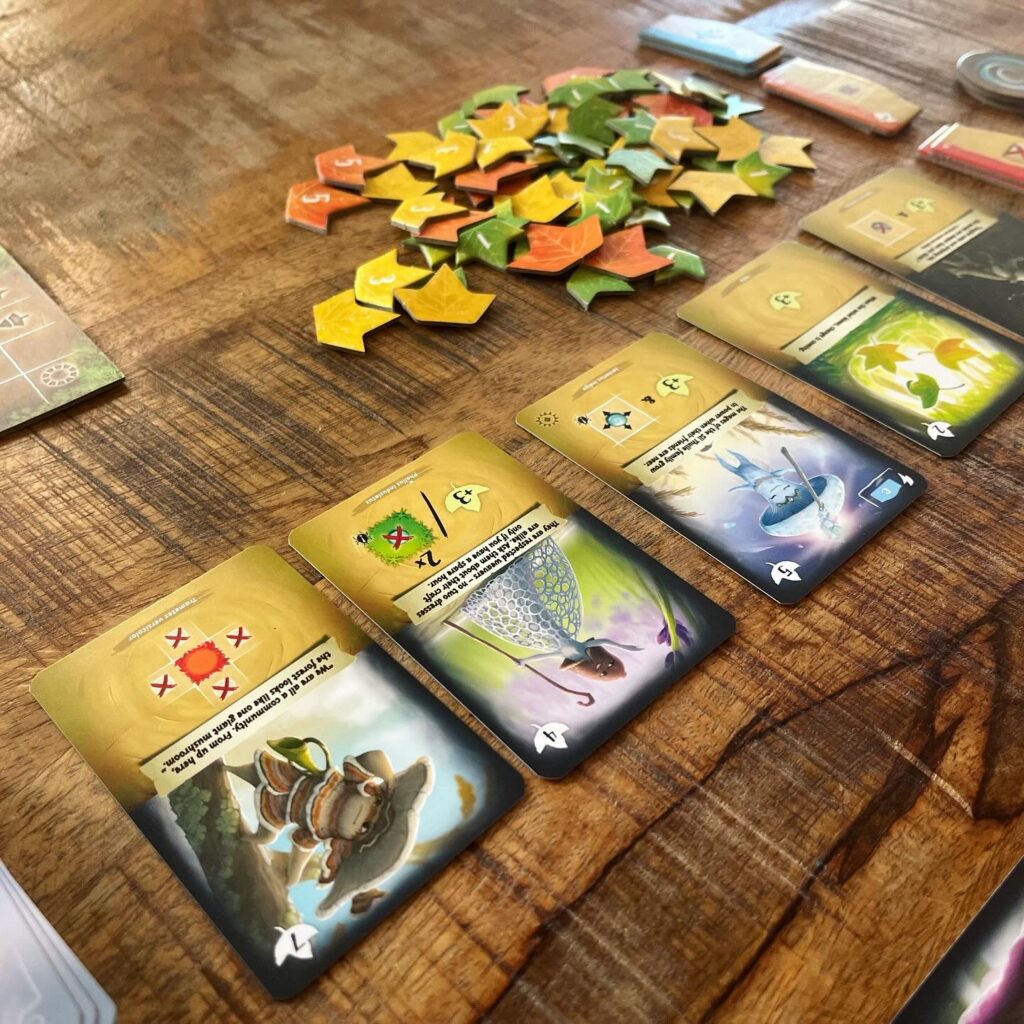
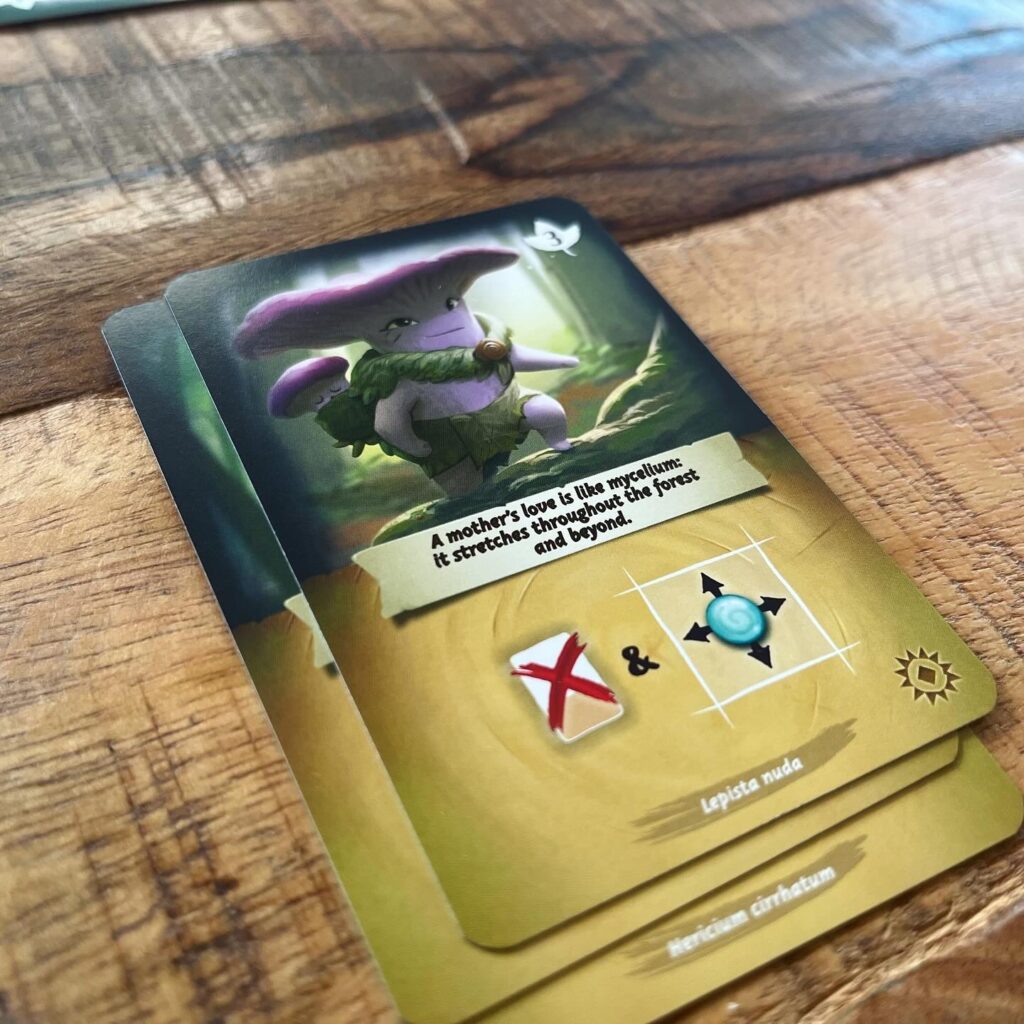
At the end of the turn, players replenish their hand to three cards. By buying cards, your deck gets bigger and hopefully better each turn. If you have removed all the dewdrops during your turn, you may be the winner, but the round is finished. If several players manage to remove all their drops during this round, the player who also has the most leaves wins.
Conclusion
Mycelia is an inviting deckbuilder and race against the clock. It is a simple introduction to various game mechanics that makes it lend itself well as a game for families or beginning board players. And the frequent players? Those can add more complicated cards and actions for more dynamic game play.
Although the game is easy to learn, the mechanism where players must move dewdrops makes for a fun puzzle and variation on the tried-and-true deckbuilder genre. Many deckbuilders quickly feel like a race, but few of these deckbuilders feel like a neck-and-neck race, and Mycelia certainly does. Players try to be the first to remove their drops, and as a result, should leave lesser cards for their opponents and build an efficient deck themselves.



